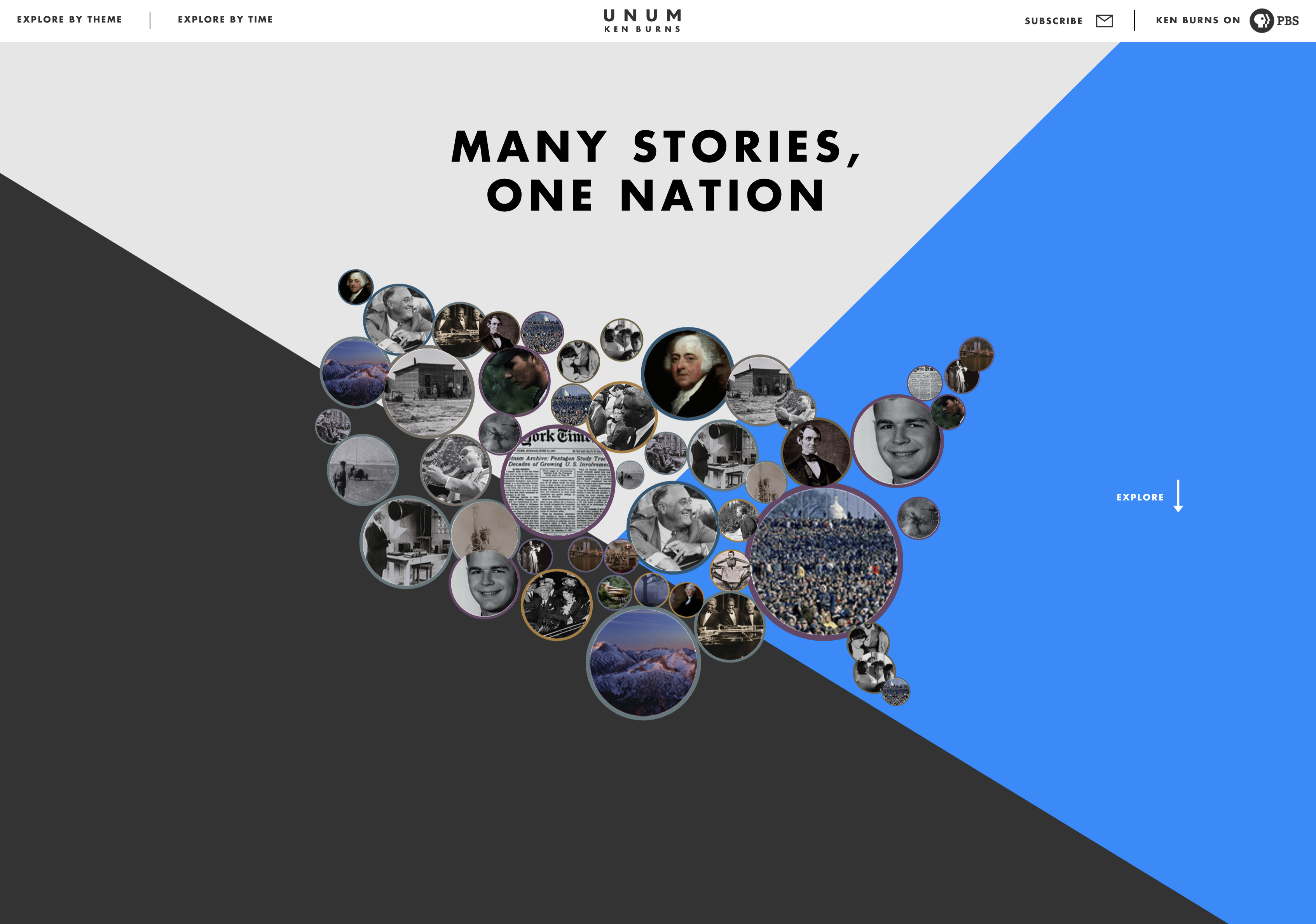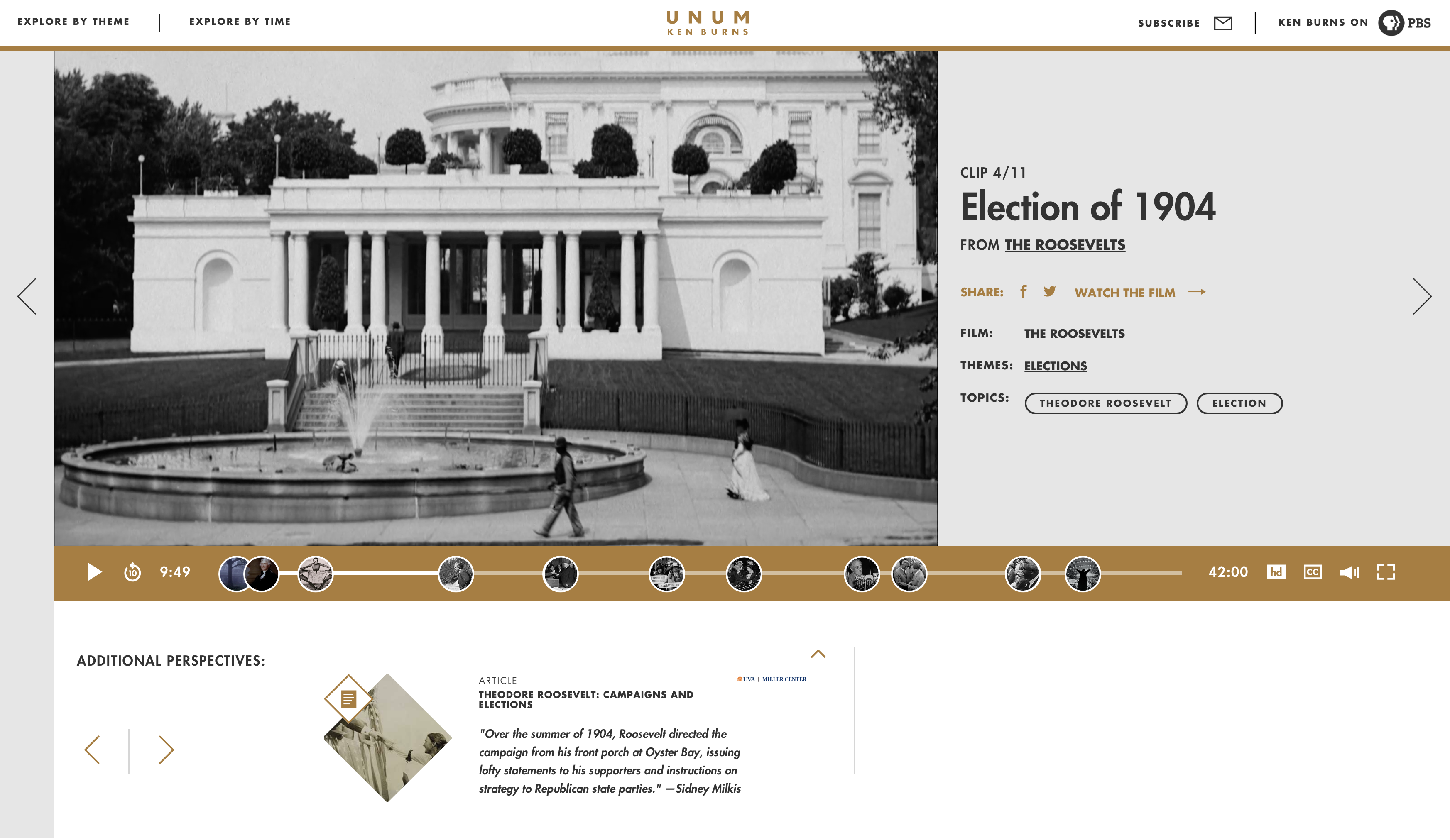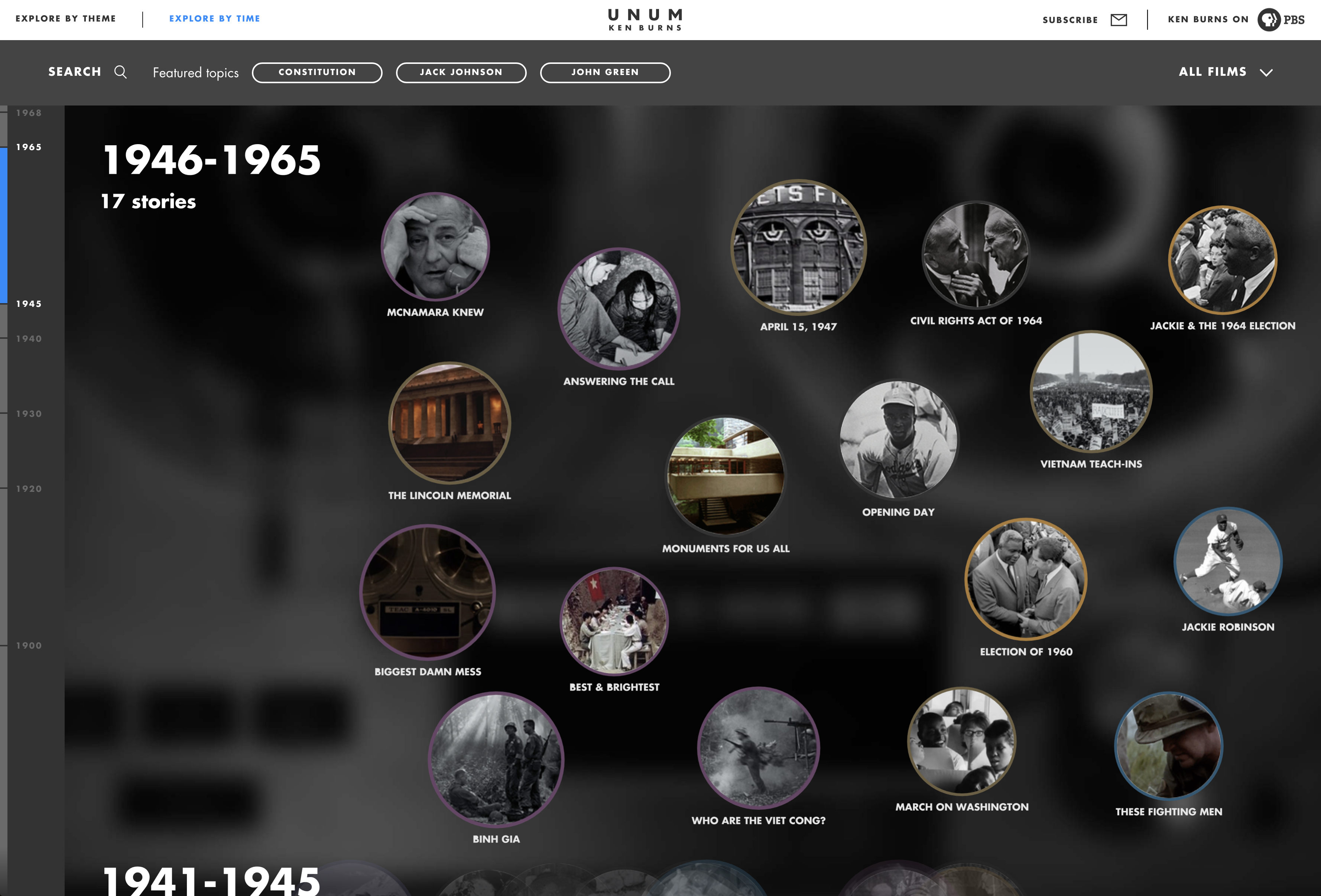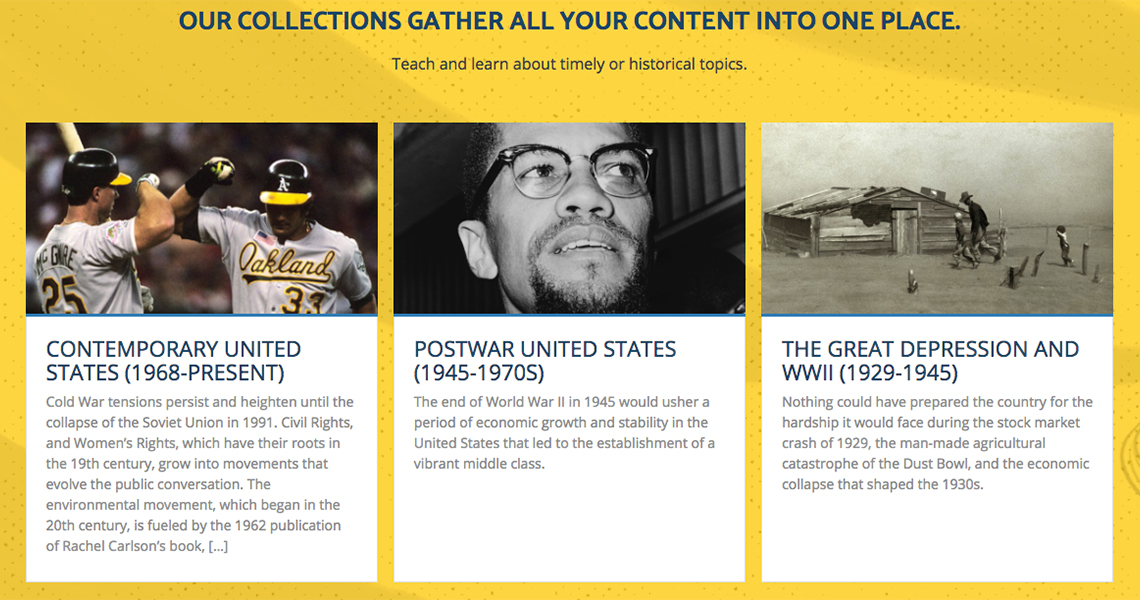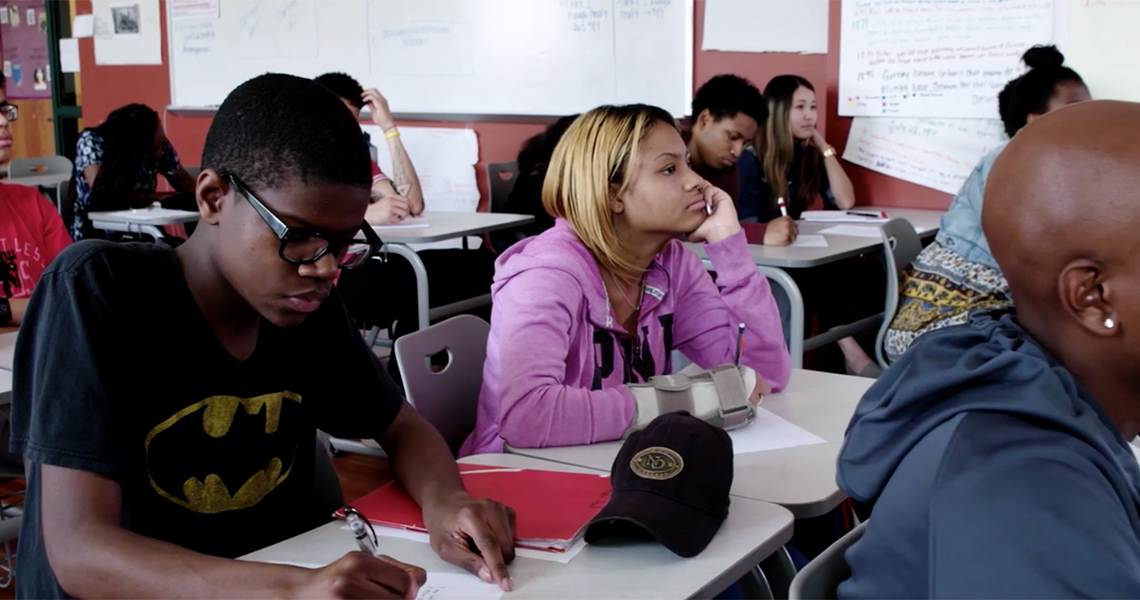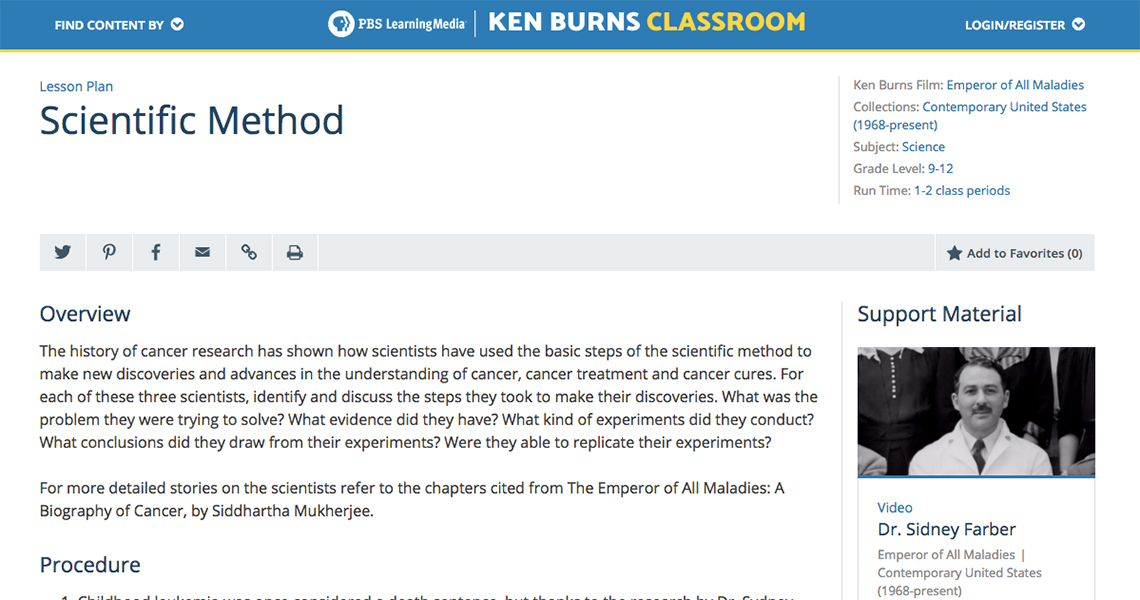Education
EDUCATIONAL OUTREACH
Every day in America, classrooms watch and discuss Ken Burns’s documentaries. The Civil War has been one of the most-used history films in American schools since its broadcast in 1990.
For the past twenty-five years, the Ken Burns name has symbolized a trusted resource for classroom use. The films are memorable, spark dialog, and provide an engaging way to understand history. Educational materials and activities created in conjunction with the films offer themes for discussion and use a storytelling approach to engage students in multimedia classroom projects. Now, with the wealth of new media opportunities available, Ken, his team at Florentine Films, and PBS LearningMedia are developing even more ways to deliver the films’ content, encourage civil discourse, and address the knowledge gaps in American schools.
Ken Burns is redefining education. You get an emotional connection to history through his films that you don’t get out of a textbook.
— Lynda Resnick, Better Angel
In the first half of 2020, over 1.1 million educators and students visited Ken Burns in the Classroom and UNUM to access film clips, lesson plans, and research tools during the COVID-19 pandemic.
Ken Burns’s timeless films reached thousands of students during the COVID-19 pandemic. The top three average monthly page views were:
The Vietnam War
63,781 views
The Civil War
23,972 views
The Dust Bowl
12,376 views
CLASSROOM ENGAGEMENT
The educational materials for Ken Burns’s documentaries challenge students to go beyond each film’s specific topic and explore the themes that are central to who we are as a nation. Developed around key curriculum subjects, including social studies, history, civics, and geography, they support critical thinking, creativity, communication, and collaboration. They are also closely aligned with content-based and common core standards.
Classroom activities include carefully selected video segments that take advantage of Burns’s extraordinary ability to bring history alive through storytelling. By stimulating discussions and civic engagement, the materials give teachers powerful tools for demonstrating how history is urgently relevant for their lives now, and in the future.
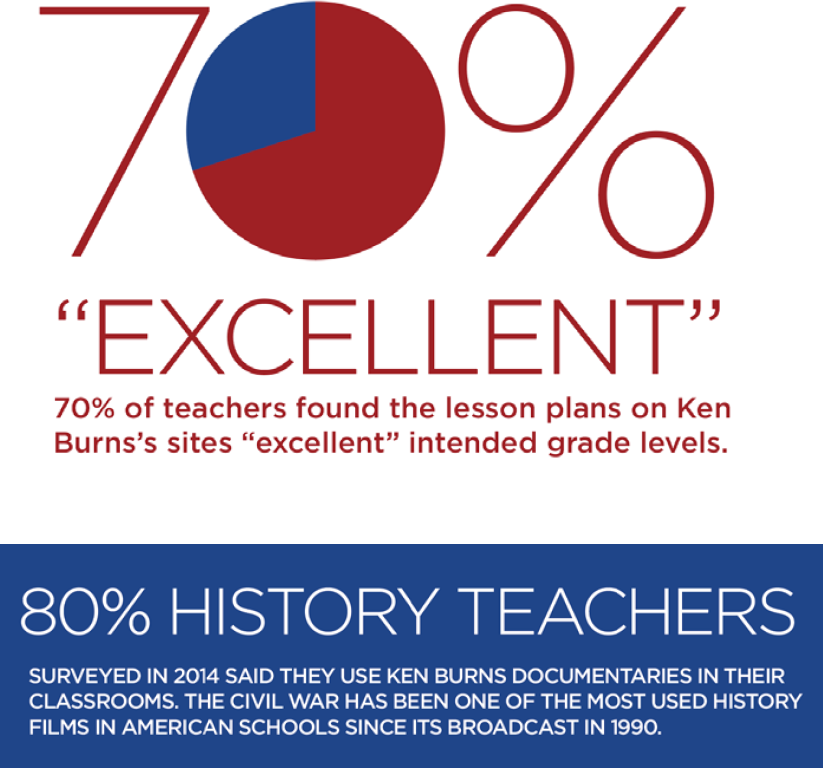
KEN BURNS’S UNUM
Ken Burns’s UNUM is a new website that makes it easy for armchair historians, students, and digital media consumers to view clips from Ken Burns’s documentaries based on time periods or themes such as leadership, innovation, and art. The website presents these clips alongside contemporary voices discussing the themes. For example, noted historian David McCullough discusses the Statue of Liberty’s role in history, and radio commentator Glenn Beck talks about the early days of radio and its power to unite and divide the country. “Why entitle this important new digital platform ‘Unum?’ “Because,” Ken Burns explains, “we have too much Pluribus and not enough Unum today. Unum knows no political party, class, race, sex, sexual orientation.”
UNUM is made possible by a generous gift from David Rubenstein.
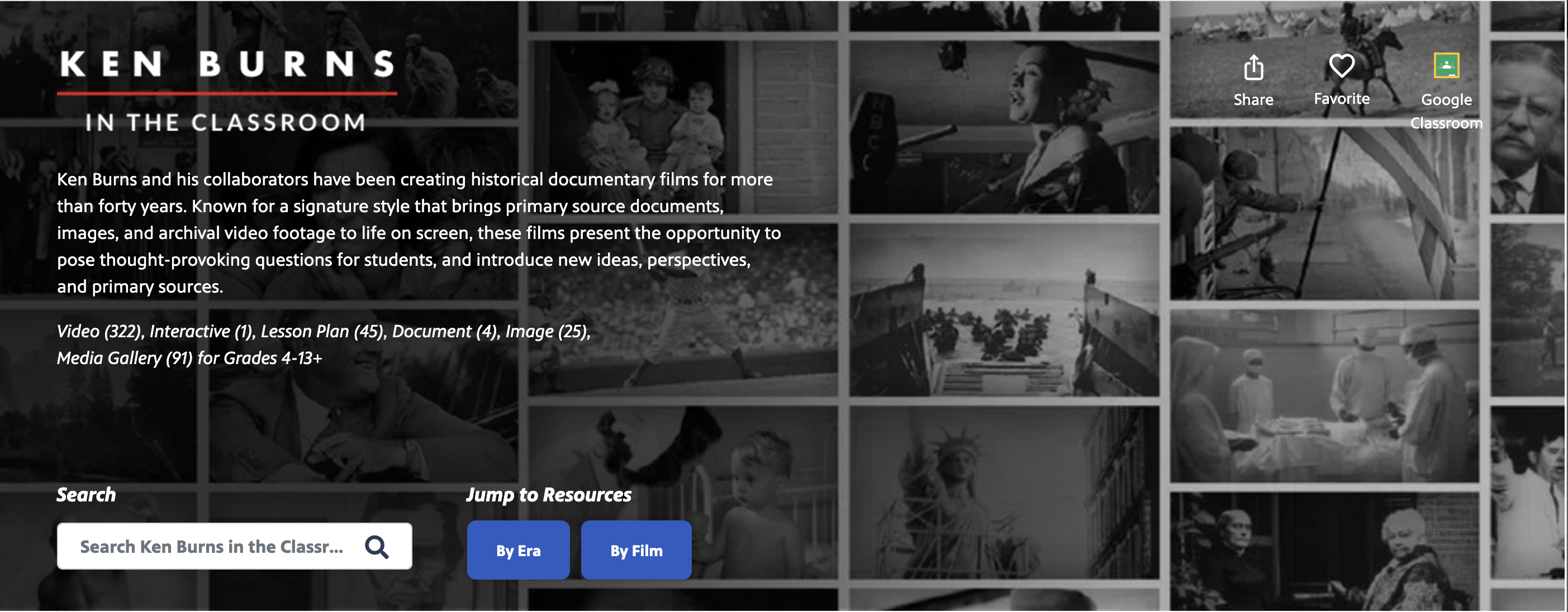
KEN BURNS IN THE CLASSROOM
Ken Burns in the Classroom is a new microsite on PBS’s website for teachers, PBS Learning Media. It is a new direct way for millions of teachers and students to find curricular resources, clips and lesson plans related to the timeless documentary films Ken has made over the last four decades. Tied to curricular standards and free to all users, this important compendium of teaching materials is a great way to use Ken Burns’s films in traditional educational settings and to reach the next generation of American historians.

